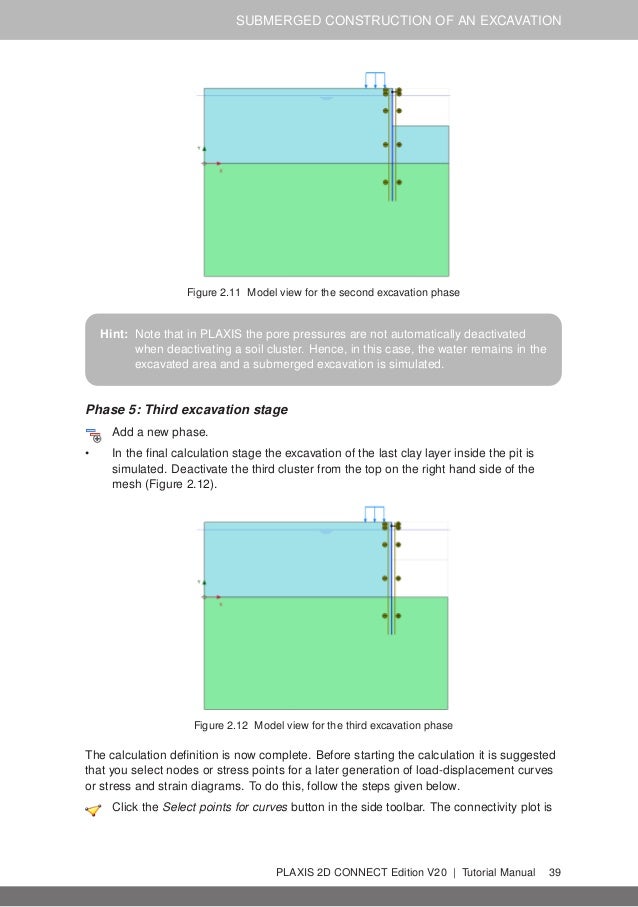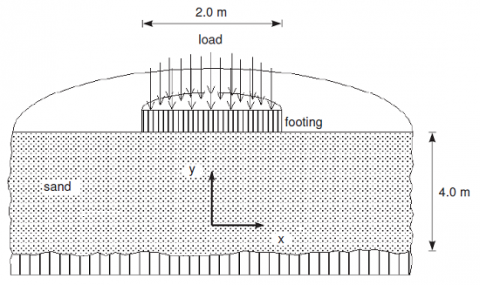
The generated slip surface can be viewed in the ‘Analysis Work Tree’ under Boundary > CircularĢ. In this example direct coordinate input method has been used to help the understanding of the coordinates in the Grid area and Radius area. [īoth Grid Range and Radius Range can be selected by clicking on the Point on Work Window using Draw Grid Range and Draw Radius Range, and the coordinates of the selected areas are inputted automatically. Enter coordinates (18,16), (16,13), (35,7), (33,4) into Left Up, Left Down, Right Up, Right Down respectively 7. Number of Centers (1-2) & Number of Center(2-3) > Enter ‘6’ for both 6ĥ. Enter the Grid Range Reference Points 1 and 2 for (X, Y) coordinates (28,24), (38,24) respectively. Model > Boundary > Slip Surface > Procedure After merging, verify that ‘Weathered Soil’ and ‘Weathered 2’ Right click and select the ‘Merge’įunction 5. From Model Work Tree click the Control key and select ‘Weathered Soil’ and ‘Weathered Soil 2’ 4. Soil 2’ are two different Mesh Sets however, they can be easily merged because they share the same properties 3. Verify that Default Mesh set is included 2.

After generating the Mesh, verify that 3 Mesh Sets have been defined. Similarly create a mesh set for the Weathered Soil below the Weak 4 Attribute > ‘1’ : Weathered Soil’, Mesh Set Name> ‘Weatheredĥ. Mesh Size > Enter ‘1’ in the Element Size 4. Select the edges above the ‘Weak Soil’ as shown 3. Main Menu > Mesh > Auto Mesh > Planar Area… 2. The Attributes, materials and properties have already been included in the start file Double click ‘GTS 2D Tutorial 38_start.gtb’ 3. Compare the FOS for the assumed active surfaces to those of current ‘SRM’, and verify the location of critical cross section which has minimum FOS.Ģ. (Such areas are nonlinear material characteristics, stress history effect due to forming process, etc.) This method is a reliable evaluation method for the slope stability through the accurate FEM a nalysis resultsħ.

This method allows users to perform the analysis of the areas which were unable to solve with current ‘li mit stability method’. SAM(Stress Analysis Method) here applies ‘virtual active surface’ which is an evaluation element in ‘limit stability method’ into the FEM analysis results. Midas GTS provides FEM ‘slope stability analysis’ (SAM) using ‘Strength Reduction Method’ (SRM) and ‘limit stability method evaluation elements’ as a stability evaluation method for slopes. Assuming the virtual active surfaces as circular or non-circular, and calculate the FOS for every active surface assumed. Model the slope as finite element, and perform finite element analysis considering nonlinear characteristic of ground. Starting File “GTS 2D Tutorialģ8_start.gtb” 5. Factor of safety (FOS) assessed for the assumed virtual active surface and the critical cross section which has minimum FOS. Analysis performed assuming failure surface as Circular and Polygonal. SAM is used for analyzing the slope including weak layer. 2D Slope Stability Analysis using SAM midas GTS 2D Tutorial 38ĢD Slope Stability Analysis using SAM Overviewġ.


 0 kommentar(er)
0 kommentar(er)
